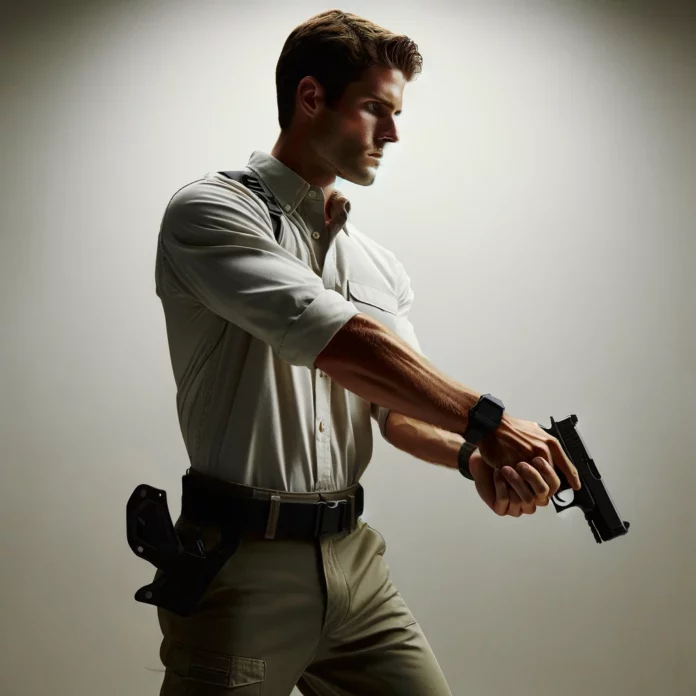Drawing from a holster is an essential skill for individuals who carry firearms for self-defense or professional purposes. It requires proper technique, adherence to safety guidelines, and regular practice to ensure a smooth and efficient draw.
This article will provide an introduction to drawing from a holster, highlight the importance of this skill, outline essential safety guidelines, explain the steps involved in the drawing process, discuss common mistakes to avoid, and suggest training and practice techniques to improve proficiency.
Drawing from a holster is important because it enables individuals to quickly access their firearm when faced with a potential threat. In critical situations, the ability to draw swiftly and safely can mean the difference between life and death.
However, it is crucial to follow safety guidelines to prevent accidents and ensure responsible firearm handling. These guidelines include always following firearms safety rules, selecting an appropriate holster, keeping the finger off the trigger until ready to shoot, and maintaining control over the firearm’s muzzle direction.
The process of drawing from a holster involves a series of steps that need to be executed smoothly and swiftly. These steps include establishing a proper grip on the firearm, releasing any retention devices on the holster, clearing clothing or obstructions that may interfere with the draw, drawing the firearm smoothly and swiftly, and indexing the finger along the slide or frame to maintain trigger discipline.
To avoid common mistakes and promote safe and effective holster drawing, individuals should avoid failing to practice properly, neglecting holster retention devices, using an inappropriate holster that hinders the draw, and exhibiting poor trigger discipline. Regular training and practice are essential to develop muscle memory, improve speed and accuracy, and reinforce safe and efficient drawing techniques.
Training and practice techniques can further enhance one’s drawing skills. Dry fire practice, which involves simulating the drawing process without live ammunition, helps improve stance, grip, sight alignment, and trigger control.
Drawing drills with an unloaded firearm can also be incorporated to practice the complete drawing motion. seeking professional training from qualified instructors can provide valuable guidance and feedback to refine holster drawing skills.
Drawing from a holster is a critical skill that requires proper technique, safety awareness, and ongoing practice.
By understanding the importance of this skill, following safety guidelines, mastering the steps involved, avoiding common mistakes, and engaging in training and practice techniques, individuals can develop the necessary proficiency to effectively and responsibly draw their firearm from a holster.
Why is Holster Drawing Important?
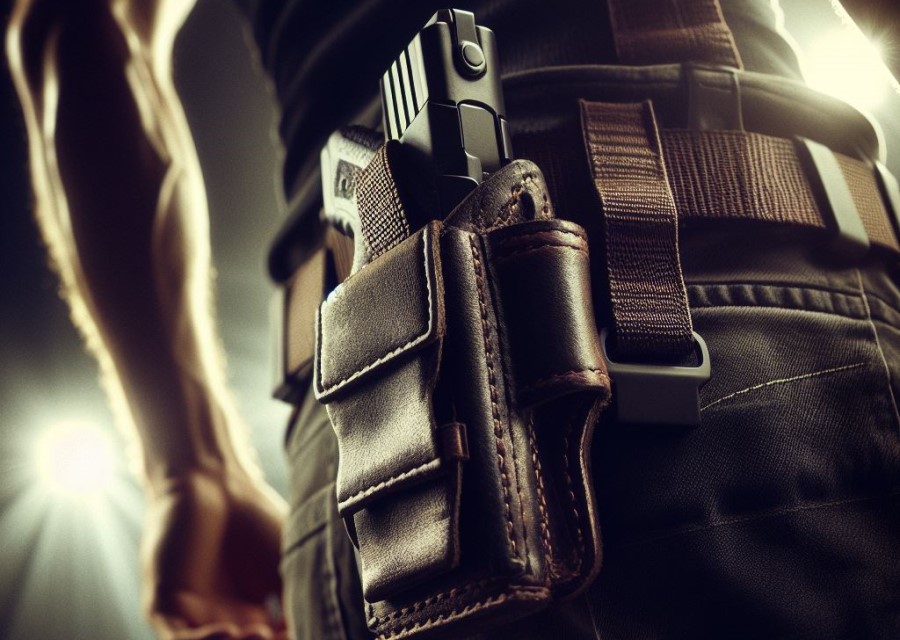
Holster drawing is important for several reasons. Firstly, it allows for quick and efficient access to a firearm in self-defense situations.
In high-stress scenarios, every second counts, and being able to draw your weapon swiftly can be a matter of life and death. Secondly, practicing holster drawing helps to develop muscle memory and improve overall shooting proficiency.
Regular practice enhances one’s ability to draw smoothly and accurately, increasing the chances of hitting the intended target.
Furthermore, holster drawing training instills discipline and reinforces safe handling practices, minimizing the risk of accidental discharges or mishaps.
Essential Safety Guidelines for Holster Drawing
When it comes to drawing from a holster, safety should always be the number one priority.
In this section, we will delve into the essential safety guidelines that every gun owner should know.
From following proper firearms safety rules to selecting the right holster, keeping your finger off the trigger, and maintaining muzzle control, these tips will ensure a secure and responsible approach to holster drawing.
So, let’s dive in and explore the key safety measures that will keep you and those around you protected.
1. Always Follow Firearms Safety Rules
When it comes to firearms safety, it is imperative to always follow firearms safety rules to ensure the well-being of yourself and others around you.
- Keep your finger off the trigger until you are ready to fire. This simple but crucial rule helps prevent accidental discharges that can cause harm or injury.
- Always treat every firearm as if it is loaded. Even if you are certain that the firearm is unloaded, always handle it with the utmost care and respect.
- Never point a firearm at anything you do not intend to shoot. Always be aware of your target and what is behind it to avoid any unintended consequences.
- Be sure of your target and what is beyond it. Before pulling the trigger, make sure you have positively identified your target and are aware of any potential hazards beyond it.
Always following these firearms safety rules is essential for preventing accidents and maintaining the well-being of yourself and those around you.
Pro-tip: Regularly refreshing your knowledge of firearms safety rules and practicing them consistently will help instill good habits and maintain your proficiency in safe firearm handling.
2. Proper Holster Selection
When it comes to proper holster selection, there are several factors to consider:
- Type of Holster: Choose a holster that is specifically designed for your firearm. Whether you prefer an inside-the-waistband (IWB) holster or an outside-the-waistband (OWB) holster, ensure it is compatible with your weapon.
- Retention Level: Evaluate the level of retention offered by the holster. Proper holster selection involves choosing one that securely holds your firearm in place, providing adequate retention to prevent accidental dislodging.
- Comfort: Comfort is crucial when selecting a holster, as it will directly impact your ability to carry and draw your firearm. Look for features such as adjustable straps or padding to ensure a comfortable fit in the proper holster.
- Concealment: If you plan on carrying concealed, proper holster selection involves choosing one that allows for effective concealment. Consider factors such as how the holster sits on your body and how well it conceals your firearm under various clothing options.
- Quality and Durability: Opt for a high-quality holster that is made from durable materials. The proper holster selection should involve choosing a well-made holster that will withstand regular use and last longer.
- Training and Practice: Keep in mind that the type of holster you choose for proper holster selection should align with your training and practice techniques. If you plan on participating in shooting sports or practicing advanced handgun draw techniques, ensure your holster allows for those movements.
By considering these factors and selecting the proper holster, you can ensure a safe and effective draw from your holster when needed.
3. Keep Finger Off the Trigger
To ensure safety and prevent accidental discharges, it is crucial to keep your finger off the trigger when drawing from a holster. Follow these steps:
- Establish a firm grip: Make sure to have a secure and proper grip on the firearm while keeping your finger away from the trigger.
- Release any retention devices: Prior to drawing, release any straps or buttons on the holster that serve as retention devices.
- Clear clothing or obstructions: Double-check for any clothing or other obstructions that might hinder the smooth drawing motion, keeping your finger off the trigger.
- Draw the firearm smoothly and swiftly: Maintain your finger along the frame or slide while drawing the firearm in a controlled and efficient manner, keeping it away from the trigger.
By following these steps, you will ensure that your finger remains off the trigger until you are ready to engage the target. This practice significantly enhances safety and minimizes the risk of accidental discharges.
4. Maintain Muzzle Control
To maintain muzzle control, it is crucial when drawing from a holster to ensure safety and prevent accidents. Always keep your firearm’s muzzle pointed in a safe direction, away from yourself and others.
Additionally, be mindful of your surroundings and ensure there are no obstacles or people in the line of fire. Keep your finger off the trigger until you are ready to shoot, as this helps prevent accidental discharges.
Stay vigilant and maintain control of your firearm at all times. Avoid any unnecessary movements or gestures that could cause the muzzle to inadvertently point towards someone.
Practicing proper techniques and undergoing quality training are also important for maintaining muzzle control. Regular practice builds muscle memory and improves proficiency in handling firearms.
Remember, when drawing from a holster, safety should always be the top priority. By following these steps and seeking proper training, you can maintain muzzle control and ensure the safety of yourself and those around you.
Steps to Draw From a Holster
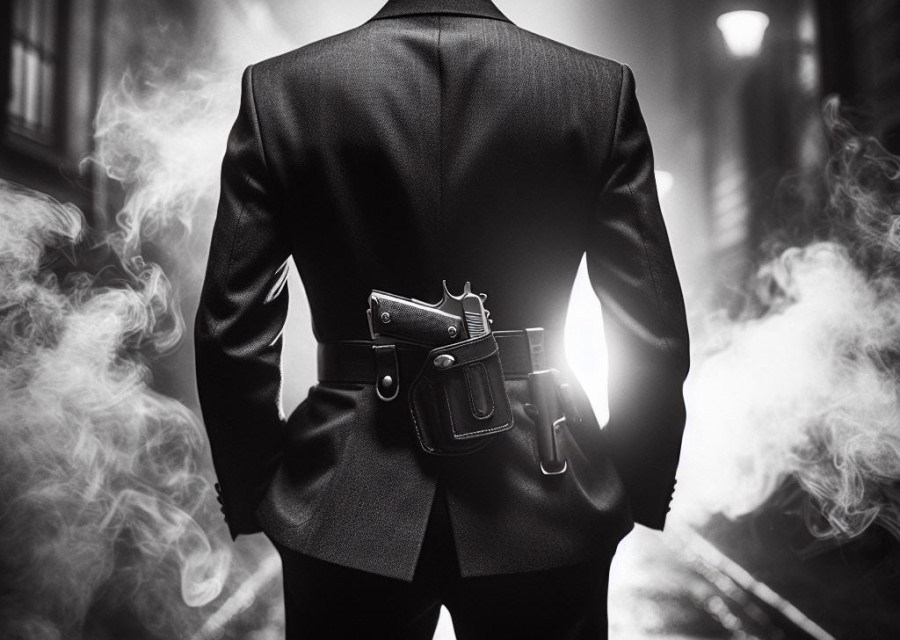
Mastering the art of drawing from a holster requires a step-by-step approach. In this section, we will break down the process into manageable stages.
From establishing a proper grip to smoothly and swiftly drawing the firearm, each sub-section unravels a crucial aspect of this essential skill. So, lock and load as we dive into the necessary steps to draw from a holster like a true professional.
Step 1: Establish a Proper Grip
When learning how to establish a proper grip when drawing from a holster, it is important to follow these steps:
- Begin by positioning your dominant hand high on the grip of the firearm. Make sure that your index finger rests straight along the slide or frame.
- Wrap your remaining fingers firmly around the grip to ensure a secure hold.
- Maintain a strong but relaxed grip, avoiding any unnecessary tension.
- Don’t forget about your non-dominant hand. Keep it in a support position, ready to assist in stabilizing the firearm.
- Make sure to practice this proper grip repeatedly. This will help you develop muscle memory and become more familiar with your firearm.
Remember, a proper grip is essential for accurate and controlled shooting. It allows for better control of recoil and significantly improves overall shooting performance.
Step 2: Release Any Retention Devices
- Identify the retention device, which could be a strap, button, or lever, on your holster.
- Execute the proper method to release the retention device, such as pressing the button or sliding the strap.
- Ensure that the retention device is completely disengaged and no longer securing the firearm in the holster.
- Rehearse this step multiple times to develop muscle memory and become familiar with the specific retention device on your holster.
- Remember to maintain a straight finger and avoid touching the trigger while performing this step.
Step 3: Clear Clothing or Obstructions
To ensure a smooth draw from a holster, it is important to follow a few key steps:
- First and foremost, grip the firearm properly, with your finger straight and away from the trigger.
- Next, release any retention devices on the holster, such as thumb snaps or retention straps.
- Now, tackle any clothing or obstructions that may impede the smooth draw of the firearm. This may require using your non-dominant hand to lift or move clothing out of the way.
- With a fluid, swift motion, draw the firearm from the holster.
- Ensure trigger discipline by placing your finger along the slide or frame of the firearm.
Step 4: Draw the Firearm Smoothly and Swiftly
- Establish a proper grip on the firearm, ensuring that your hand is securely wrapped around the grip and your fingers are aligned properly.
- Release any retention devices on the holster, such as straps or locks, ensuring that the firearm is ready to be drawn quickly.
- Clear any clothing or obstructions that may hinder your access to the firearm. Ensure that there are no obstacles in your way and that your hand can easily reach the grip.
- With a smooth and quick motion, draw the firearm from the holster, bringing it up to your shooting position. Make sure to maintain control of the firearm throughout the movement.
- Index your trigger finger along the slide or frame of the firearm, keeping it parallel to the barrel. This position helps to prevent any unintentional contact with the trigger.
It is important to practice this step repeatedly to develop muscle memory and enhance your proficiency in drawing the firearm smoothly and swiftly.
This skill is crucial for self-defense situations and shooting sports where speed and precision are essential. Seek quality training and engage in regular practice, including dry fire practice and drawing drills with an unloaded firearm.
Remember to always follow proper safety guidelines and maintain proper trigger discipline when handling firearms.
Step 5: Index the Finger Along the Slide or Frame
When it comes to drawing from a holster, it is crucial to incorporate step 5, which involves indexing the finger along the slide or frame.
- This step is important for maintaining trigger discipline and keeping the finger away from the trigger until ready to shoot.
- To begin, extend the shooting arm towards the target and position the fingers of the support hand alongside the slide or frame of the firearm.
- Ensure that the finger remains straight and parallel to the slide or frame, without touching the trigger.
- Indexing the finger along the slide or frame is essential for preventing accidental discharges and promoting proper firearm handling.
To further enhance safety and proficiency when drawing from a holster, regular practice of proper technique is essential.
- Dedicate time to dry fire practice, focusing on building muscle memory and refining the draw motion.
- Consider seeking professional training to learn advanced handgun draw techniques and receive guidance on safety concerns.
- Make sure you have a proper holster that securely retains the firearm and allows for a smooth draw.
- Always remember to keep the finger off the trigger until ready to shoot and maintain proper trigger discipline.
By following these steps and incorporating quality training and practice, you can develop a solid foundation for safe and effective holster drawing.
Common Mistakes to Avoid
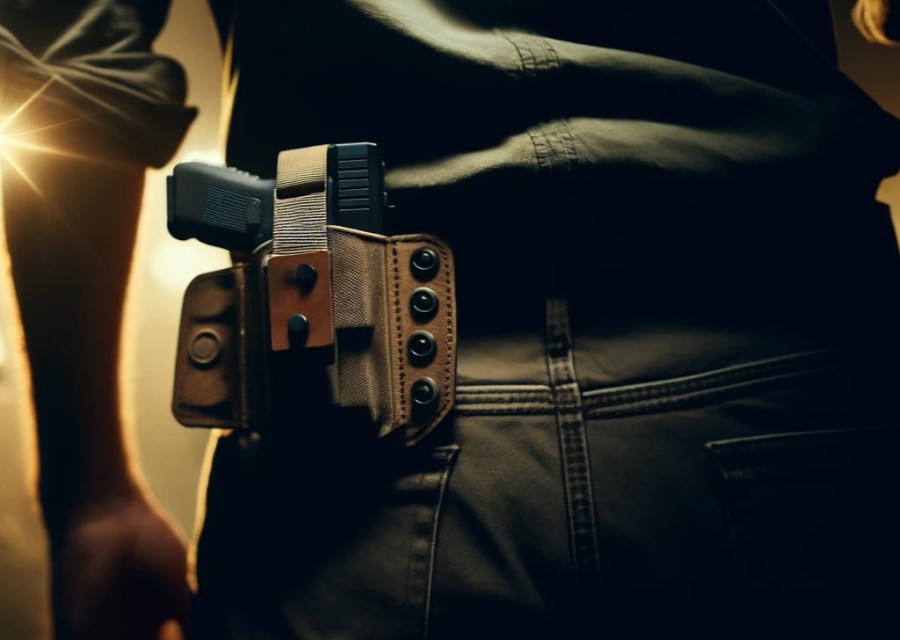
When it comes to drawing from a holster, avoiding common mistakes is key. Let’s dive into some crucial aspects that can make or break your holster draw. From neglecting practice to choosing the wrong holster, these pitfalls can have serious consequences.
We’ll also discuss the importance of holster retention devices and maintaining proper trigger discipline. So, buckle up and get ready to learn how to draw from a holster like a pro!
1. Failing to Practice Properly
Failing to practice properly when it comes to drawing from a holster can have serious consequences. Regular practice is essential to develop the necessary muscle memory and proficiency required for a safe and efficient draw. Without proper practice, individuals may struggle with the proper technique, resulting in slower and less accurate draws.
It is important to prioritize range time and dedicate sufficient practice sessions to hone your skills. Without consistent practice, your ability to extend and press the trigger smoothly and swiftly may be compromised. Practice also allows you to build your stance and become familiar with different shooting stances, including shooting from retention and in unorthodox positions.
Neglecting proper practice could increase safety concerns and lead to poor trigger discipline. Without training, individuals may not release the pistol correctly, use an inappropriate holster, or fail to employ proper techniques for drawing from retention. Furthermore, practice sessions provide an opportunity to work on dry fire drills, which are important for developing trigger control and building confidence.
To avoid these mistakes, seek quality training and guidance from professionals who can teach you the proper techniques and provide valuable feedback. Incorporate dry fire practice into your routine, ensuring your finger remains straight and off the trigger during the draw. Additionally, invest in a proper holster and spare magazine for safe and efficient draws.
By prioritizing regular and effective practice, you can enhance your skills, develop proper technique, and ensure a safe and efficient draw from a holster.
2. Neglecting Holster Retention Devices
When it comes to holster drawing, neglecting holster retention devices can have serious consequences. It is important to prioritize safety and ensure that your firearm remains secure during the drawing process. Here are some reasons why neglecting holster retention devices can be a mistake:
- Increased risk of accidental discharge: Failing to properly secure your firearm in the holster can lead to accidental discharges, putting yourself and others in danger.
- Difficulty in controlling the firearm: Without proper retention devices, it becomes harder to maintain control of the firearm during the draw, increasing the risk of mishandling or dropping the weapon.
- Compromised accessibility: Holster retention devices are designed to strike a balance between security and accessibility. Neglecting these devices can impede your ability to quickly and smoothly draw your firearm when needed.
Pro-tip: Always choose a holster that offers reliable retention devices and ensure that they are properly engaged. Regularly practice drawing from your holster to maintain muscle memory and familiarize yourself with the specific retention mechanisms of your chosen holster. By giving due attention to holster retention devices, you can enhance your safety and efficiency when drawing from a holster.
3. Using an Inappropriate Holster
Using an inappropriate holster can pose significant safety risks when drawing a firearm. It is crucial to avoid using an inappropriate holster for these reasons:
- Poor retention: By using an inappropriate holster, there is a risk of inadequate retention, which can result in the firearm being dislodged or unintentionally falling out.
- Difficulty in drawing: If the holster lacks proper retention or fit, it can hinder the quick and efficient drawing of the firearm. This can put you at a disadvantage in a self-defense situation.
- Trigger coverage: An inappropriate holster may not adequately cover the trigger guard, increasing the likelihood of accidental discharges while drawing or reholstering the firearm.
- Concealment issues: Using an ill-suited holster for concealed carry can compromise concealment, making it obvious that you are carrying a firearm and potentially attracting unwanted attention.
To enhance safety and proficiency in your holster drawing techniques, it is crucial to invest in a proper holster that meets your specific needs, whether it be for concealed carry or range use. Ensure that the holster provides adequate retention, completely covers the trigger guard, and allows for a smooth and easy draw.
4. Poor Trigger Discipline
Poor trigger discipline is a critical mistake to avoid when drawing from a holster. It can lead to accidental discharges and potentially dangerous situations. Here are the key points to remember:
- Always keep your finger straight and off the trigger until you are ready to shoot. This is a fundamental rule of firearm safety.
- Avoid placing your finger on the trigger prematurely while drawing the firearm. It should only make contact when you have a clear sight picture and have made the decision to shoot.
- Train yourself to establish good trigger discipline through practice and repetition. This will help build muscle memory and ensure you consistently follow safe handling procedures.
- Avoid any unnecessary movement or pressure on the trigger during the drawing process. Maintain a deliberate and controlled motion to prevent accidental discharges.
- Remember that trigger discipline is not only important during the draw, but also when reholstering the firearm. Keep your finger outside the trigger guard until the weapon is safely and fully holstered.
By practicing proper trigger discipline, you can avoid poor trigger discipline and minimize the risk of unintentional firearm discharges. This will ensure the safety of yourself and others around you.
Training and Practice Techniques
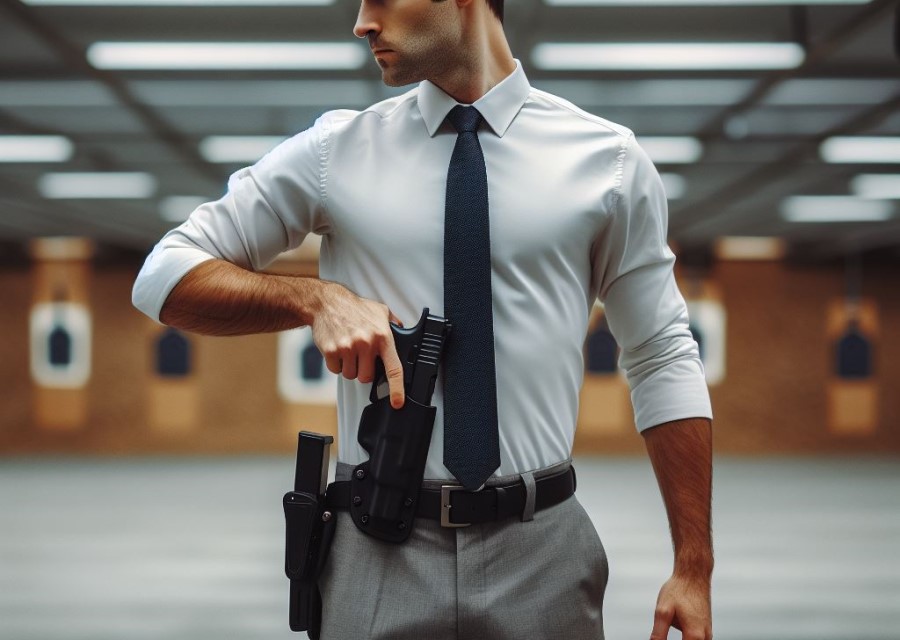
Immerse yourself in the world of training and practice techniques for drawing from a holster! From dry fire practice to drawing drills with an unloaded firearm, and seeking professional training, this section is packed with valuable insights.
Learn how to perfect your draw, enhance your accuracy, and develop the skills needed to efficiently and safely draw from a holster. Get ready to take your firearm handling skills to the next level!
1. Dry Fire Practice
Dry fire practice is a crucial technique for improving handgun draw skills and building muscle memory.
Step 1: Ensure the firearm is unloaded and all ammunition is removed for dry fire practice.
Step 2: Find a safe and designated area for dry fire practice.
Step 3: Assume a proper shooting stance with feet shoulder-width apart and body facing the target during dry fire practice.
Step 4: Extend your arms forward, keeping your finger straight and off the trigger during dry fire practice.
Step 5: Focus on a specific point on the target and align the sights with it for dry fire practice.
Step 6: Slowly press the trigger while maintaining sight alignment during dry fire practice.
Step 7: Keep your eyes on the sights and observe the movement during the trigger press for dry fire practice. This helps identify any potential flinching or jerking.
Step 8: Reset the trigger by releasing it fully and then repeating the process during dry fire practice.
Step 9: Practice drawing from the holster smoothly and quickly, ensuring proper grip and trigger finger discipline during dry fire practice.
Step 10: Incorporate other techniques, such as shooting from retention and shooting from unorthodox positions, to enhance proficiency during dry fire practice.
Dry fire practice should be done regularly to develop and maintain proper technique and improve overall shooting skills.
Remember to always prioritize safety and follow all firearms safety rules while practicing. Seek quality training and professional guidance to enhance your skills further.
2. Drawing Drills with an Unloaded Firearm
When practicing drawing drills with an unloaded firearm, it is essential to follow these steps:
- Ensure the firearm is unloaded and all ammunition is safely stored away.
- Find a safe and secure area to practice where there is no risk of injury or damage.
- Stand in a proper shooting stance, with feet shoulder-width apart and body squared towards the target.
- Place your dominant hand on the grip of the unloaded firearm, maintaining a proper grip.
- Extend and press your non-dominant hand against your body, close to the holstered firearm.
- Mentally visualize your draw and practice the motion of releasing any retention devices on the holster.
- Clear any clothing or obstructions from the path of the draw, ensuring a smooth and swift motion.
- Draw the firearm out of the holster, keeping your finger straight and outside the trigger guard.
- Index your finger along the slide or frame of the firearm, away from the trigger.
- Practice these drawing drills with an unloaded firearm repeatedly, focusing on consistency, speed, and accuracy.
By regularly practicing these drawing drills with an unloaded firearm, you can improve your technique, develop muscle memory, and enhance your overall proficiency in drawing from a holster.
3. Seek Professional Training
When it comes to drawing from a holster safely and effectively, seeking professional training is crucial. It is important to research local firearms training facilities or certified instructors in your area. Contact the training facility or instructor to inquire about their credentials and experience. Additionally, asking for recommendations from fellow firearm enthusiasts or trusted sources can provide valuable insights.
Reading reviews or testimonials from past students is another helpful way to gauge the quality of the training. Once you have gathered enough information, enroll in a training course that specifically focuses on holster drawing techniques. Attend the training sessions with an open mind and a willingness to learn.
During the training, pay close attention to the instructions and demonstrations provided by the instructor. It is also important to actively participate in training exercises and drills to practice the proper techniques. Don’t hesitate to ask questions and seek clarification whenever necessary.
Remember that practice makes perfect. It is crucial to practice regularly outside of the training sessions to reinforce the skills learned. Continuously seeking feedback and guidance from experienced shooters or instructors can also greatly improve your proficiency.
Lastly, stay updated on the latest developments and advancements in holster drawing techniques through ongoing education. By incorporating all of these steps and seeking professional training, you can ensure a safe and effective holster drawing experience.
Frequently Asked Questions on How to Draw from A Holster
How do I set up my stance for drawing from a holster?
When setting up your stance for drawing from a holster, position your feet shoulder-width apart. This provides a stable base and allows for better balance and control during the draw.
Can I practice CCW (Concealed Carry) draws indoors?
Yes, you can practice CCW draws indoors. However, it’s crucial to remove all ammunition from your gun and store it separately to avoid mixing it up with snap caps. Safety should always be the top priority.
How often should I practice drawing from a holster?
It is recommended to practice drawing from a holster for at least 10 minutes a day. Regular practice helps build muscle memory and improves your overall skills and confidence.
What kind of outfits work best for concealed carry?
The choice of outfits for concealed carry depends on several factors, including your body type, weather conditions, and personal preferences. It’s important to choose clothing that allows for easy access to your concealed firearm while keeping it hidden and secure.
Are laser training cartridges beneficial for drawing practice?
Yes, laser training cartridges or guns can enhance your dryfire training when you have limited access to a range or a tight budget. These cartridges emit a laser when the trigger is pressed, providing visual feedback on your shot placement.
Why is it important to remove all ammo from the gun when practicing draws?
Removing all ammunition from the gun during draw practice is crucial to prevent any accidental discharges. By ensuring the gun is unloaded and the ammunition is stored safely, you eliminate the risk of firearm-related casualties while focusing on improving your technique.

